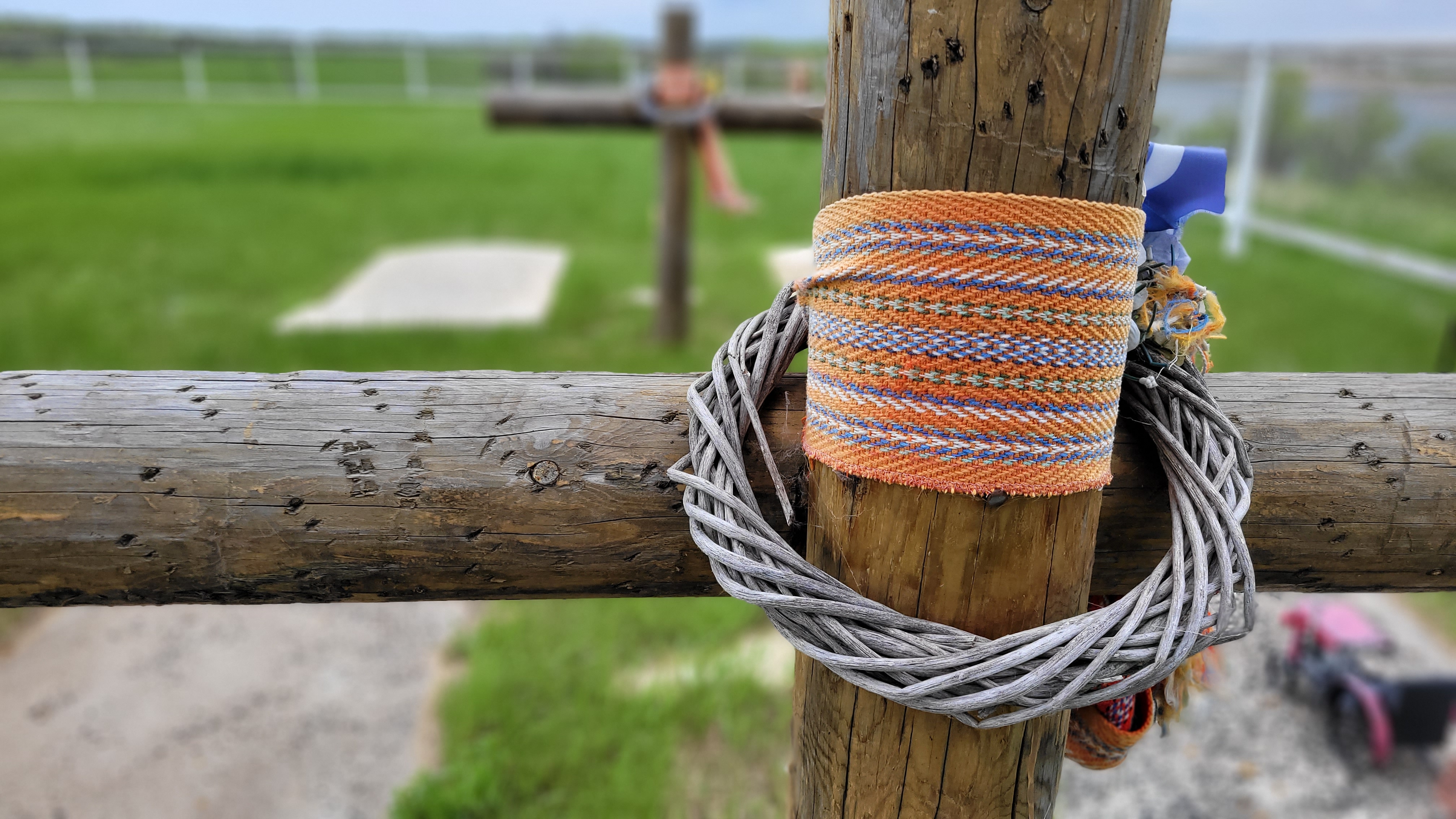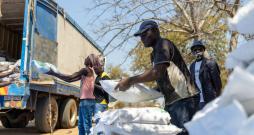Doctrines & Discoveries: Round Prairie Métis Cemetery
A visit with Cort Dogniez

Half an hour south of Saskatoon is the Round Prairie Métis Cemetery, all that’s visibly left of one of this region’s earliest Métis settlements. Cort Dogniez reflects on the stories of Métis families (including his own) who are linked to this place, and what they tell us about the unique place, and unique challenges, of the Métis Nation on the prairies.
“Go Deeper” guide
Here are travel directions for your own learning tour to the site, along with some helpful background, questions for reflection or group conversation, and suggestions for next steps in your learning journey.
Head south out of Saskatoon on Lorne Avenue / Hwy 219. Travel through Whitecap Dakota First Nation. The sign and turnoff for the cemetery is about 19 km past the Whitecap gas station. Please show respect as you approach and explore the cemetery site.
CLICK HERE to open map (link opens new window).
· Battle of Fish Creek: the opening skirmish between Métis and Canadian military forces south of Batoche, on April 24, 1885. The Métis won.
· kohkom: Michif (and Cree) for “grandmother.”
· Métis local: an official organized unit of the Métis Nation. A local has an elected president; locals are organized into 12 “regions” within Métis Nation—Saskatchewan.
· Michif: the language of the Métis Nation (primarily a mix of Cree and French)
· “Reign of Terror”: A period of violent attacks on the Red River Métis community, from Aug 1870 to late 1872. British soldiers and Canadian militia brought to the new province of Manitoba terrorized the Métis with assaults, arson, rape, and murder.
· Rupert’s Land: the British and Canadian name (1670-1870) for the vast lands draining into Hudson Bay, from Alberta to Quebec, and the northern USA to Nunavut.
· scrip: a certificate issued to Métis by the Canadian government (1870s-1920s) which could be redeemed for land (sometimes, also cash), in exchange for Métis rights to the land. The system was inconsistent and fundamentally unfair to the Métis.
· Whitecap: leader of a Dakota band which fled Minnesota and settled at Arrow Woods (south of current Saskatoon) in 1862.
· Have you, your family or community ever felt invisible or ignored? If so, what impact did that have?
· How would you rate your understanding of the Métis? Have they ever been “the invisible people” to you?
· What are you learning to see now, of the Métis story and Métis community?
After listening, please sign our online guest register & feedback form.
· read:
o Cort Dogniez, Road to La Prairie Ronde (2020), Growing up Métis: Stories of Resiliency (2024). (Short and informative children’s books).
o Jean Teillet, The North-West is Our Mother: The story of Louis Riel’s People, the Métis Nation. (2019)Doug Cuthand, Askiwina: A Cree World (2007).
· visit:
o Batoche National Historic Site, Batoche, SK.
o Museum and Archives room at Gabriel Dumont Institute, Saskatoon SK (call ahead for arrangements),
o Duck Lake Interpretive Centre, Duck Lake, SK
· do:
o attend the Back to Batoche festival (mid July)
o attend Métis Cultural Days, Saskatoon (early Sep)
Doctrines & Discoveries is a production of MCC Saskatchewan’s Indigenous Neighbours program.
We are deeply grateful for the knowledge keepers who shared their stories, knowledge and insights with us. Proper protocol was followed for the sharing of these truths.
We are grateful to the elders and staff of the Saskatchewan Indigenous Culture Centre for their visionary work in establishing the Buffalo Child Stone interpretive site. www.sicc.sk.ca/buffalo-child-stone
Thanks to the following music artists. Their tracks are used under the Creative Commons licence:
- The opening loop is “Funky Percussions” (loop ver.1) by AudioCoffee. freesound.org/s/712649/ License: Attribution NonCommercial 4.0
- The closing track is “Around (Instrumental)” by Oursvince. www.tribeofnoise.com/music/show/29632 License: Attribution ShareAlike 3.0
MCC gratefully acknowledges financial support for this project from Sask Lotteries, via the Multicultural Initiatives Fund of SaskCulture.
Full transcript and a PDF of the episode available (links open new windows).
Subscribe on Spotify or Apple Podcasts (links open new windows).

